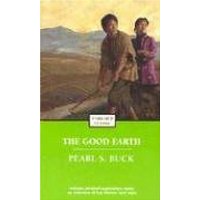
基本信息出版社:Pocket Books
页码:448 页
出版日期:2005年03月
ISBN:1416500189
条形码:9781416500186
装帧:简装
正文语种:英语
丛书名:Enriched Classics
外文书名:大地/沃土
内容简介 在线阅读本书
BY PRACTICAL SCHOLARSHIP
A poignant tale about the life and labors of a Chinese farmer during the sweeping reign of the country¹s last emperor.
• A concise introduction that gives readers important background information
• A chronology of the author's life and work
• A timeline of significant events that provides the book's historical context
• An outline of key themes and plot points to help readers form their own interpretations
• Detailed explanatory notes
• Critical analysis, including contemporary and modern perspectives on the work
• Discussion questions to promote lively classroom and book group interaction
• A list of recommended related books and films to broaden the reader's experience
SERIES EDITED BY CYNTHIA BRANTLEY JOHNSON
作者简介 Pearl Comfort Sydenstricker was born on June 26, 1892, in Hillsboro, West Virginia. Her parents were Southern Presbyterian missionaries, most often stationed in China, and from childhood, Pearl spoke both English and Chinese. She returned to China shortly after graduation from Randolph-Macon Woman's College in Lynchburg, Virginia, in 1914, and the following year, she met a young agricultural economist named John Lossing Buck. They married in 1917, and immediately moved to Nanhsuchou in rural Anhwei province. In this impoverished community, Pearl Buck gathered the material that she would later use in The Good Earth and other stories of China.
Pearl began to publish stories and essays in the 1920s, in magazines such as The Nation, The Chinese Recorder, Asia, and The Atlantic Monthly. Her first novel, East Wind, West Wind, was published by the John Day Company in 1930. John Day's publisher, Richard Walsh, would eventually become Pearl's second husband, in 1935, after both received divorces.
In 1931, John Day published Pearl's second novel, The Good Earth. This became the bestselling book of both 1931 and 1932, won the Pulitzer Prize and the Howells Medal in 1935, and would be adapted as a major MGM film in 1937. Other novels and books of nonfiction quickly followed. In 1938, less than a decade after her first book had appeared, Pearl won the Nobel Prize in literature, the first American woman to do so. By the time of her death in 1973, Pearl had published more than seventy books: novels, collections of stories, biography and autobiography, poetry, drama, children's literature, and translations from the Chinese. She is buried at Green Hills Farm in Bucks County, Pennsylvania. --This text refers to an out of print or unavailable edition of this title.
媒体推荐 Review
Boston Transcript One need never have lived in China or know anything about the Chinese to understand it or respond to its appeal. --This text refers to the Paperback edition.
编辑推荐 Review
Boston Transcript One need never have lived in China or know anything about the Chinese to understand it or respond to its appeal. --This text refers to the Paperback edition.